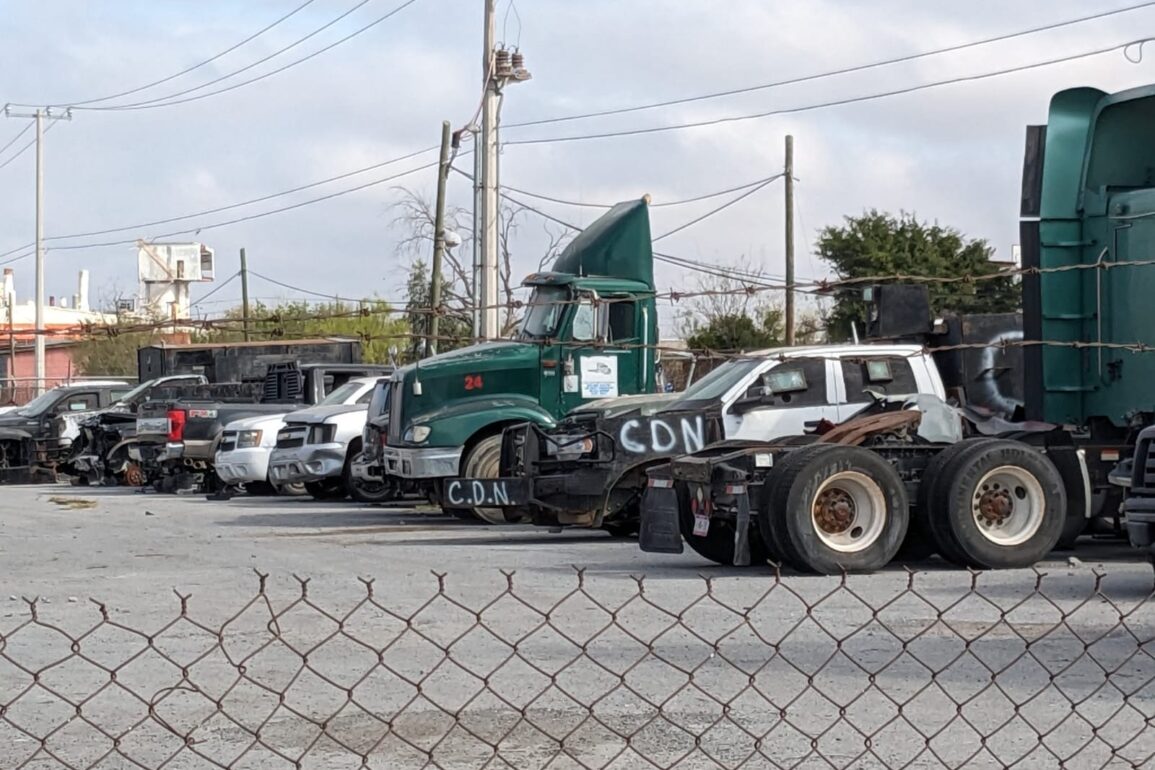
Authorities in the United States have accused the feared Treviño Morales brothers of continuing to control remnants of the Zetas despite a decade behind bars in Mexico, raising questions as to why the infamous criminal leaders have yet to be extradited.
US federal prosecutors announced a superseding indictment against former Zetas leaders Miguel Treviño Morales, alias “Z40,” and his brother Omar, alias “Z42,” earlier this month. The two are accused of engaging in a continued criminal enterprise following their arrests. Prosecutors say they’ve installed family members to carry on running the Northeast Cartel, the dominant splinter faction of the Zetas, which trafficks cocaine and marijuana and also launders money.
The brothers “ran a transnational drug trafficking organization that was responsible for committing extreme violence and trafficking massive quantities of narcotics into the United States,” said Deputy Assistant Attorney General Nicole Argentieri, head of the US Justice Department’s Criminal Division.
The Treviño Morales brothers assumed control of the Zetas in the mid-2000s, after many years as trusted enforcers for the group. The Zetas started as a paramilitary wing of the Gulf Cartel before breaking off and becoming arguably the most ruthless criminal organization Mexico had ever known. They were later indicted in the District of Columbia in 2008 for drug trafficking and money laundering.
SEE ALSO:Mexico’s Zetas: From Criminal Powerhouse to Fragmented Remnants
More than any other group, the Zetas became known for shocking displays of violence. This included horrific acts like the dumping of 49 headless bodies on a highway near the northern city of Monterrey, as well as the cold-blooded 2010 massacre of 72 migrants in San Fernando, which was followed by the slaughter of another 193 people in the same city the following year.
After years of violent criminal activity to further their control of Nuevo Laredo, one of the most important US-Mexico border crossings in the state of Tamaulipas, the Mexican Marines arrested Miguel in July 2013. Two years later, his brother Omar was captured in the state of Nuevo León.
The Zetas’ power and strength quickly diminished following those arrests. With the rise of more formidable groups like the Jalisco Cartel New Generation (Cartel Jalisco Nueva Generación – CJNG), the group split into several rival factions like the Northeast Cartel, Old School Zetas, and Talibanes.
InSight Crime Analysis
Despite a US extradition request dating back to 2011 and nearly a decade behind bars in Mexico, it comes as little surprise that the Treviño Morales family has continued to control the Northeast Cartel and use its influence in Mexico to avoid extradition to the United States.
“Mexico’s prisons allow [the brothers] to continue sending out orders, settle disputes, and approve killings. Their counter-offensive against extradition goes beyond a legal fight – they’ve also been campaigning in the media and casting doubt over the legitimacy of the extradition,” said Alberto Islas, a security analyst and founder of Global Leading Solutions, a consultancy firm.
Lawyers for the brothers have criticized the Mexican government for failing to connect them to the Zetas’ criminal activity. And in a recent letter to Mexico’s recently-installed President Claudia Sheinbaum, Miguel went so far as to claim that he is not, in fact, Z40, and is being confused with someone else. Sending him to the United States would be “a historic mistake and a betrayal of sovereignty,” he argued in the letter.
But US prosecutors insist that following the death of the Zetas’ founding members, the group largely became a hyper-local, family enterprise controlled by the Treviño Morales brothers and their relatives. These family connections, coupled with deep-seated corruption within the Mexican penal system, suggest that US extradition may be the only way to finally sever the brothers’ criminal power.
From the very beginning, Miguel and Omar relied on their brother José in the United States to funnel millions of dollars in drug money that was laundered by purchasing racehorses. José was eventually arrested in the United States, convicted, and sentenced to 20 years in prison for leading what was then a huge part of the Zetas’ money laundering structure.
Relatives of the Treviño Morales brothers continued playing important roles in the group even after it started to fracture following their arrests. Juan Francisco Treviño Chávez, alias “El Kiko,” and the nephew of Omar and Miguel, initially assumed leadership of the Northeast Cartel, which emerged as the most prominent Zetas splinter faction.
SEE ALSO:The Northeast Cartel and Criminal Hegemony in Nuevo Laredo, Mexico
After his arrest in 2016 and extradition to the United States, yet another relative, Juan Gerardo Treviño Chávez, alias “El Huevo,” took the reins of the group. He assumed the top leadership spot, and also founded a network of hitmen that came to be known as the “Tropa del Infierno,” or Hell Troop.
The Mexican military captured El Huevo in spectacular fashion in March 2022. The arrest kicked off an hours-long firefight that left burned-out vehicles across Nuevo Laredo, paralyzing the city of some 400,000 people. He was extradited shortly after and will stand trial in the United States in November.
While the current leadership structure of the Northeast Cartel is unclear, the latest charges suggest the Treviño Morales brothers will continue to influence the group so long as they stay in prison in Mexico. When InSight Crime visited Nuevo Laredo last year, graffiti referencing the Northeast Cartel was present all over the city, leaving no doubt as to who remained in charge.
Featured image: Armored trucks spray painted with CDN in reference to the Northeast Cartel sit at an impound lot in Nuevo Laredo, Tamaulipas. Credit: Parker Asmann
This post was originally published on this site be sure to check out more of their content.









